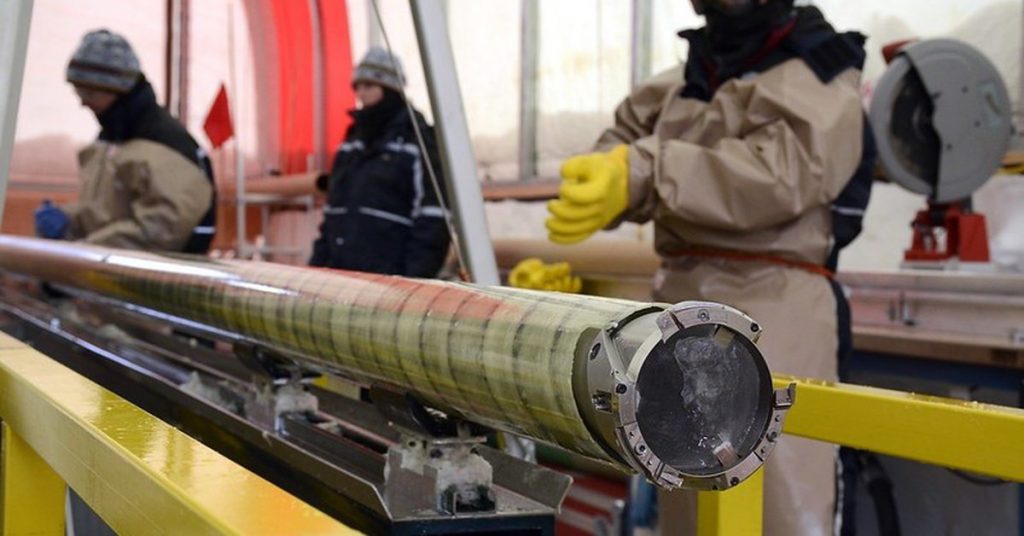:quality(85)/cloudfront-us-east-1.images.arcpublishing.com/infobae/FOCYCRV2SVGNPCBX4CSPLYPBJY.jpg 420w,https://www.infobae.com/new-resizer/jLoX5JHOHNgJgaR-fKw27ao4Ra4=/768x512/filters:format(jpg):quality(85)/cloudfront-us-east-1.images.arcpublishing.com/infobae/FOCYCRV2SVGNPCBX4CSPLYPBJY.jpg 768w,https://www.infobae.com/new-resizer/sfF0YcXKmaSZal9_wFWdQt6blfc=/992x661/filters:format(jpg):quality(85)/cloudfront-us-east-1.images.arcpublishing.com/infobae/FOCYCRV2SVGNPCBX4CSPLYPBJY.jpg 992w,https://www.infobae.com/new-resizer/_1LN_X_q2rQDdkT1crDdlFdTIBU=/1200x800/filters:format(jpg):quality(85)/cloudfront-us-east-1.images.arcpublishing.com/infobae/FOCYCRV2SVGNPCBX4CSPLYPBJY.jpg 1200w)
Madrid, 4 (European Press)
A study of two methods for reconstructing ancient temperatures has provided a better understanding of how cold Antarctica was during the last Ice Age, about 20,000 years ago.
Antarctica, the coldest place on Earth today, was even colder during the last ice age. For decades, science has suggested that Ice Age temperatures in Antarctica were on average about 9°C cooler than they are today.
An international team of scientists, led by Christo Boisert of Oregon State University, revealed in the journal Science that while parts of Antarctica were as cold as 10 degrees below current temperatures, temperatures in central East Antarctica were 4 to 5 degrees colder Only, about half of previous estimates.
“This is our first consistent, definitive response for all of Antarctica,” said Buizert, a climate change specialist at Oregon State University. “The surprising discovery is that the amount of cooling varies greatly depending on where you are in Antarctica. This cooling pattern is likely due to changes in ice sheet height that occurred between the Ice Age and today.”
Understanding the temperature of the planet during the last ice age is critical to understanding the transition from cold to warm climates, and modeling what could happen as the planet warms as a result of current climate change, said Ed Brook, a paleoclimatologist at Ohio State University. One of the co-authors of the article.
“Antarctica is of particular importance in the climate system,” Brook said. “We use climate models to predict the future, and these climate models have to correct for all kinds of things. One way to test these models is to make sure we have a good understanding of the past.”
The researchers said the last ice age represented a natural experiment to understand the planet’s sensitivity to changes in greenhouse gases such as carbon dioxide. Core samples from ice that has accumulated over hundreds of thousands of years help tell this story.
In the past, researchers have used isotopes of water in ice sheets, which essentially act like a thermometer, to reconstruct temperatures in the last ice age. In Greenland, these isotope changes can be calibrated in other ways to ensure their accuracy. But in much of Antarctica, researchers haven’t been able to calibrate an isotope thermometer in other ways.
“It’s like we have a thermometer, but we can’t read the scale,” said Buizert, an assistant professor in the School of Earth, Oceanic and Atmospheric Sciences at Ohio State University. “One of the places where we haven’t had a calibration is East Antarctica, where the oldest continuous records of ice cores have been drilled, making it a crucial place for understanding climate history.”
In the new study, the researchers used two methods to reconstruct ancient temperatures, using ice cores from seven locations in Antarctica: five from East Antarctica and two from West Antarctica.
Well thermometry measures temperatures throughout the thickness of the ice cap. The Antarctic ice sheet is so thick that it retains a memory of earlier and colder Ice Age temperatures that can be measured and reconstructed, said Fudge, assistant professor in the University of Washington’s Department of Earth and Space Sciences.
The second method examines the properties of snow cover as it accumulates and turns into ice over time. In East Antarctica, this layer of snow can vary from 50 to 120 meters and has been compressed for thousands of years in a process that is very sensitive to changes in temperature.
The researchers found that both methods produced similar temperature reconstructions, giving them confidence in the results.
They also found that the amount of ice age cooling is related to the shape of the ice sheet. During the last ice age, Bozart said, part of the Antarctic ice sheet became thinner as the amount of snow decreased. This reduces the height of the surface and the cooling in those areas was 4 to 5 degrees. In places where the ice sheet was thickest during the Ice Age, temperatures dropped by more than 10 degrees.
“This relationship between altitude and temperature is well known to mountaineers and pilots: the higher you go, the colder it gets,” Buizert said.

“Social media evangelist. Student. Reader. Troublemaker. Typical introvert.”

:quality(85)/cloudfront-us-east-1.images.arcpublishing.com/infobae/TEQF6EONZRFGLLLDIDD4L2O4EE.jpg)

:quality(75)/cloudfront-us-east-1.images.arcpublishing.com/elcomercio/XU32LRAEZFDDPNVHLFU3CKVBYY.jpg)



More Stories
Venezuela ranks fourth in female leadership in science and technology in Latin America
In Portuguesa and Sucre they explore the wonderful world of science
The university court overturns the expulsion of two teachers and a chemical sciences student